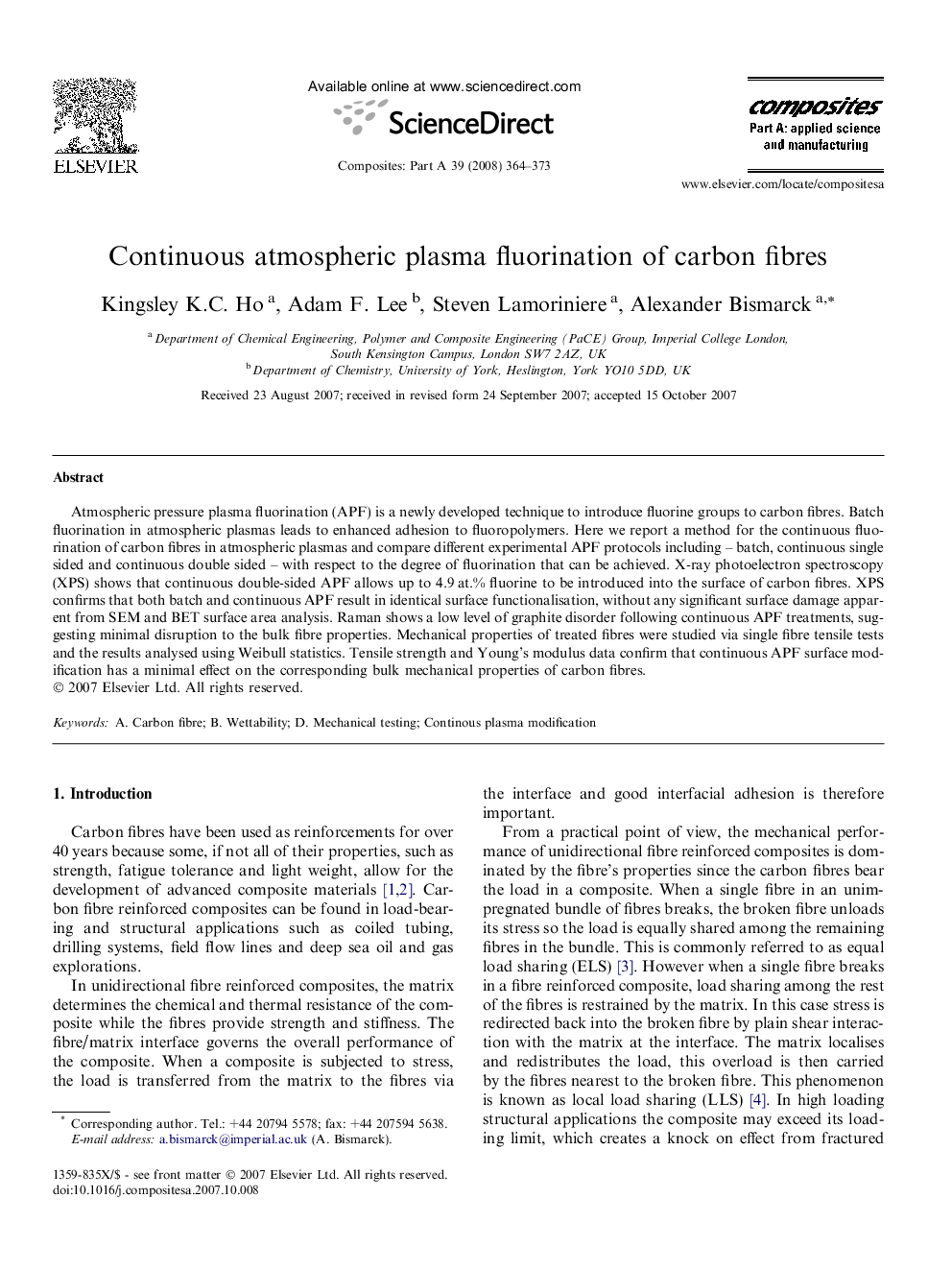| Article ID | Journal | Published Year | Pages | File Type |
|---|---|---|---|---|
| 1467463 | Composites Part A: Applied Science and Manufacturing | 2008 | 10 Pages |
Atmospheric pressure plasma fluorination (APF) is a newly developed technique to introduce fluorine groups to carbon fibres. Batch fluorination in atmospheric plasmas leads to enhanced adhesion to fluoropolymers. Here we report a method for the continuous fluorination of carbon fibres in atmospheric plasmas and compare different experimental APF protocols including – batch, continuous single sided and continuous double sided – with respect to the degree of fluorination that can be achieved. X-ray photoelectron spectroscopy (XPS) shows that continuous double-sided APF allows up to 4.9 at.% fluorine to be introduced into the surface of carbon fibres. XPS confirms that both batch and continuous APF result in identical surface functionalisation, without any significant surface damage apparent from SEM and BET surface area analysis. Raman shows a low level of graphite disorder following continuous APF treatments, suggesting minimal disruption to the bulk fibre properties. Mechanical properties of treated fibres were studied via single fibre tensile tests and the results analysed using Weibull statistics. Tensile strength and Young’s modulus data confirm that continuous APF surface modification has a minimal effect on the corresponding bulk mechanical properties of carbon fibres.
